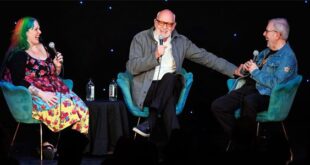The power of preservation should propel you… or at least in the case of film. Did you know that 80% of the silent film era is gone? Eradicated from history thanks to either outright neglect and/or deterioration. I did not know this, and I am really not too surprised, but there’s a lot of things I learned from watching the Sundance documentary, These Amazing Shadows. Hitting all the points on the head for being educational and informational as well as entertaining, this film basically outlines why I watch such a broad spectrum of film.
As I mentioned before, documentaries are far from my favorite genre. As my wife pointed out, I seem to be far more interested when they have anything to do with film. She is correct. I am in no way against documentaries; I just want to watch most films for escapism from the real world which is all documentaries want to show you. Counterproductive by my standards is all.
The National Film Preservation Act of 1988 was established by the Board to select 25 films every year for preservation in the Library of Congress. These films have to be “culturally, historically, or aesthetically significant films.” To be considered for inclusion each film must be at least ten years old. Ranging everywhere from shorts to features to music videos and all across the wide spectrum from Hollywood classics to the orphaned film there are also newsreels, silent films, experimental films, serials, documentaries, independent films and even television movies. From the oldest film selected, Newark Athlete (1891) to the most recent, Fargo (1996), I can’t help but want to try to seek out and see the films on this list of which I have not yet seen.
Whether directors Paul Mariano and Kurt Norton are pointing out the shame that 2001: A Space Odyssey was not even nominated for Best Picture or showing us a “hockey puck” (a film reel so neglected and deteriorated that it is literally a brick of film), the film also becomes rather moving as the film Topaz (shot illegally, documenting life at the Topaz War Relocation Center in my own backyard of Delta, Utah during World War II), which was never meant to be a home movie in its inception, has now moved on to become so much more than just a documentary at the same time. I’m sure in time this film will also be selected into the Registry and rightly so as it tells us why it’s so important to preserve these treasures and maybe if we’ve gotten clumsy over the next ten years can remind us once again.
These Amazing Shadows features interviews ranging from members of the Preservation Board to directors and writers (Rob Reiner, John Waters, Christopher Nolan, Amy Heckerling), actors and actresses and even film critics (Zooey Deschanel, Leonard Maltin), there’s no stone left unturned as to why film preservation has become such a necessity. These films truly reflect the times or milestones of which they were created. I won’t be surprised at all if The Social Network (while I feel is undeserving of its probably Best Picture win) is deserving of inclusion upon the list as the film is a genuine snapshot of a generation that cannot be ignored as are the rest of the films showcased here – particularly the restored version of 1933’s Baby Face along with 1915’s The Birth of a Nation. So now if you’ll excuse me, I’ve got a NetFlix queue to start updating.
Photos courtesy Gravitas Docufilms
 Blogcritics The critical lens on today's culture & entertainment
Blogcritics The critical lens on today's culture & entertainment



